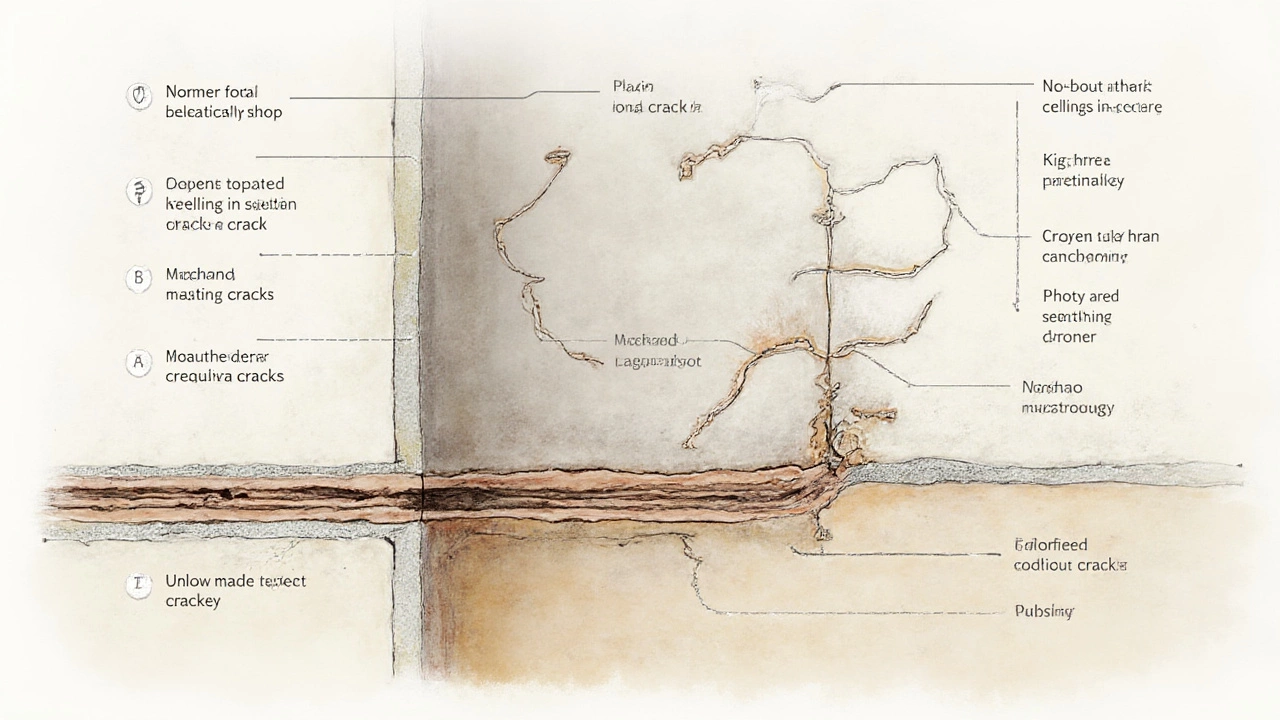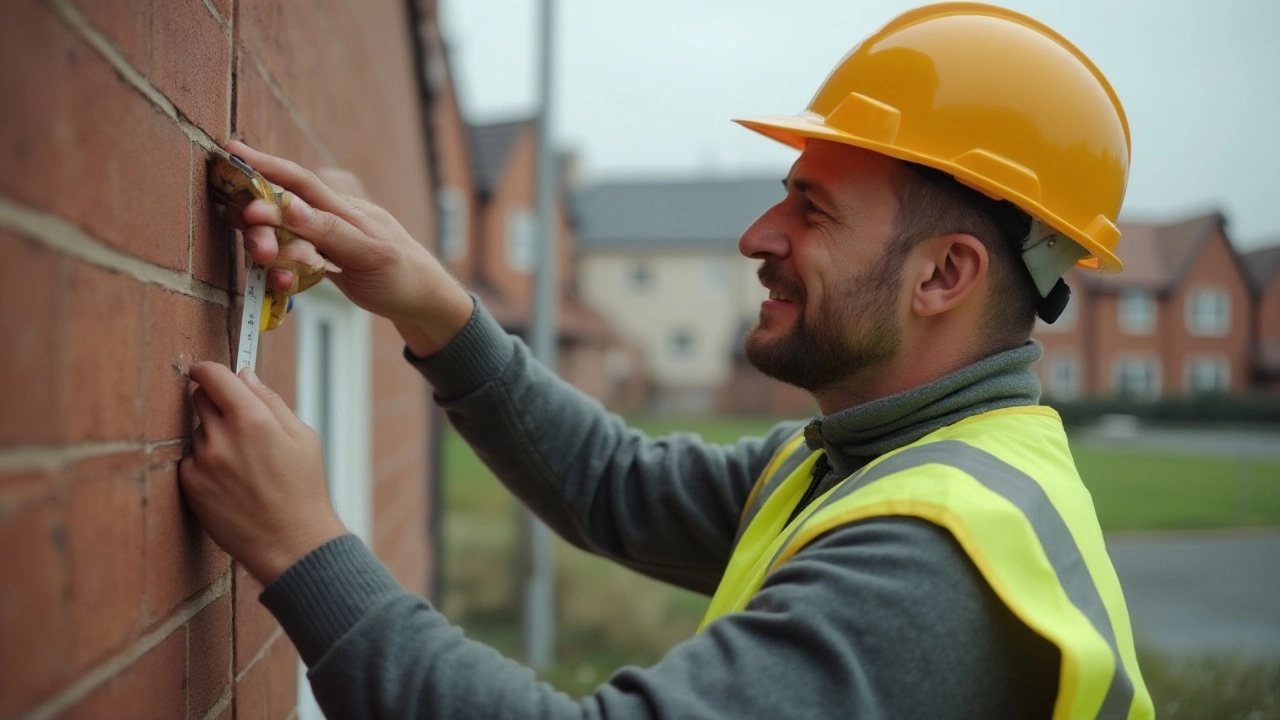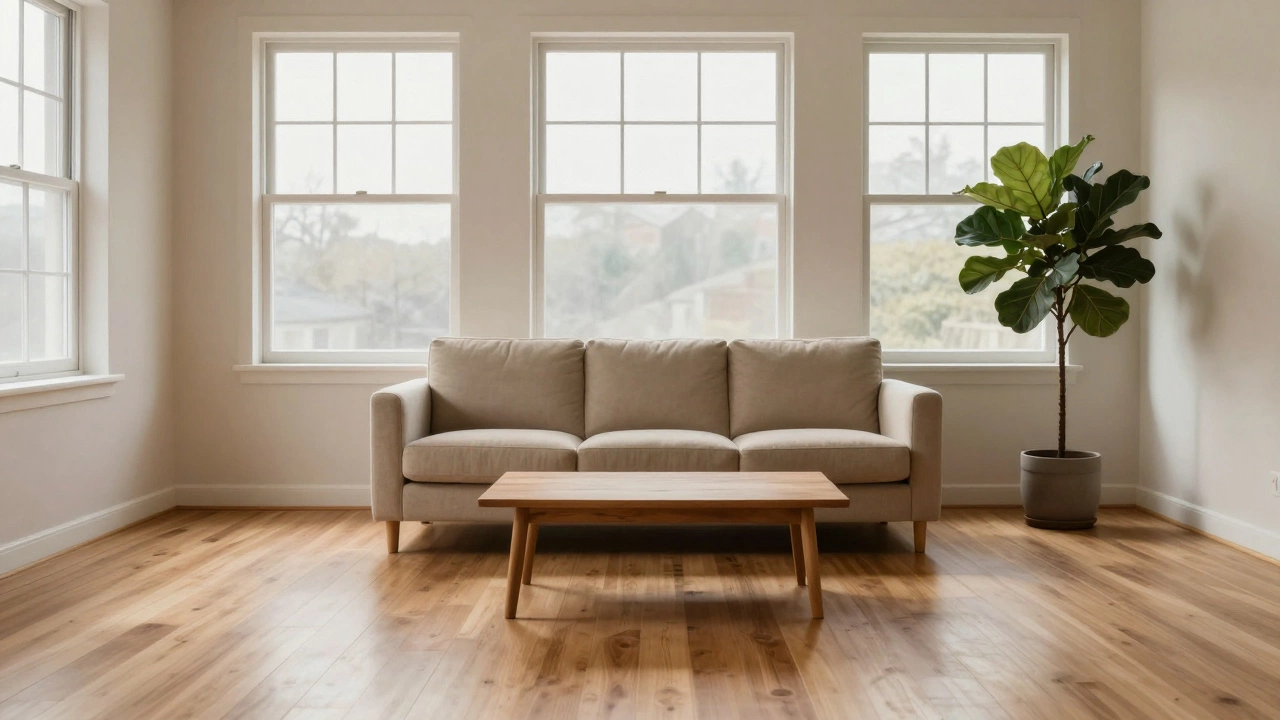Think building a brand-new home means zero cracks? If only. Even a shiny new place can show some odd lines and gaps, sometimes sooner than you’d expect. That first little crack above a doorframe or along the edge of a window can make your stomach drop. Relax—most of the time, those tiny splits are just your home settling into its own skin. Still, if you've ever stared too long at a hairline in the drywall and wondered if it's the start of something bigger, you're definitely not alone. I get it. I remember when Amara and I moved into our current house, I used to crouch beside any new mark in the living room with a flashlight, like a detective on a mission. The trick is telling which cracks are just part of the deal and which ones are waving the red flag.
Why Do New Homes Crack?
Let’s bust a myth right away: a fresh batch of plaster and modern building techniques can’t eliminate every tiny crack. Your home is a living structure, not a block of concrete in a vacuum. It’s built from hundreds of different materials—wood, metal, drywall, concrete—all packed together. Every material moves a bit in response to temperature, humidity, and time. Just like how a leather jacket softens up and forms new creases as you wear it, your house adjusts and sighs as it settles into its foundation. During the first year, builders even expect a bit of shifting, especially if you’re dealing with wet concrete, timber framing, or mechanical systems that are flexing for the first time.
Here’s what usually happens: the house is brand new, everything feels rock solid, but in a few months you start spotting thin cracks in the paint or drywall—often above doors, near windows, or where two walls meet. This happens because your house is adjusting to its environment. In the UK, the National House Building Council (NHBC) says slight cracks up to 2mm wide—just about the width of a credit card—are considered harmless and are usually just cosmetic.
“Drying shrinkage and minor settlement cracks in plaster, ceilings and walls are common in new homes and not usually a sign of a defect,” advises the NHBC.
So when is it not normal? If those cracks are wider than 5mm, seem to keep growing, or run in zigzags across several bricks, you might want to call in a professional. Cracks related to seasonal changes—like in areas with freezing winters and hot summers—may get a little bigger or smaller, but shouldn’t suddenly triple in size. Concrete foundations also shrink as they cure, which can cause thin hairline cracks along basement floors or walls. These are almost always just part of the process—unless they start seeping water or feel wider than the edge of a nickel.
Don’t forget, your own habits play a role too! If you’re a heavy-duty home chef like Amara or love long, steamy showers, that added humidity can make crack lines a bit more visible, especially in kitchens and bathrooms. Even your furnace or air conditioner cycling can shift moisture around, making wood and drywall expand or contract just a little.

Types of Cracks and What They Mean
Spotting cracks can feel like reading the tea leaves inside your walls. You just want to know: harmless or worth a panic call? Start by looking at the shape, location, and width of each crack. Here’s what typically turns up in new homes:
- Hairline cracks: These are super-thin, usually less than a credit card wide, and common on walls or ceilings. Most come from shrinkage in plaster or drywall as materials dry and settle. They’re normal.
- Straight vertical or horizontal cracks: Running along seams where two sheets of drywall meet or at the corners of doors or windows. Again, usually nothing to stress about. Tape, filler, and a fresh coat of paint fix these right up.
- Diagonal or stepped cracks: These can show up on brickwork or block foundations, typically near corners. If they’re small, they likely come from minor settlement. If they’re wide (think: bigger than 5mm), sticking doors, or cracks running through bricks (not the mortar), that’s time to check in with your builder or a foundation pro.
- Wide, jagged, or growing cracks: If you measure a crack and a couple of months later it’s noticeably wider, that’s a possible sign of ongoing movement or even structural trouble. Especially watch for cracks that let in daylight or water—or if your doors and windows start sticking.
- Ceiling cracks: These often form where the ceiling meets a wall, or right in the middle of a long room. Sometimes it’s just the sheetrock flexing under the weight of attic insulation or HVAC ducts.
- Floor cracks: Concrete floor cracks, especially in basements or garages, can look dramatic but usually result from concrete shrinking as it cures. Unless water is coming in or the floor is uneven, most of these are only skin deep.
If you feel like you’re seeing a new crack every week, relax a bit. The first year is when you’ll see most of them—and most builders expect a “settlement year” with a bit of cosmetic touch-up included in your warranty. What’s really important is keeping an eye out for red flags, like: cracks wider than 5mm; doors you can’t close; cracks on both interior and on the outside walls in the same spot; floors sloping or bouncing; or any water coming in through cracks. For example, if you live in a city with heavy clay soil, you might see wider cracks after a dry spell or a wet spring. That’s normal for the soil, but if one corner of the home dips and you start seeing a gap at the baseboard, it’s worth a closer look.
If you want peace of mind, try a simple trick: use a pencil to mark the ends of a crack. If it hasn’t spread in three or four months, odds are it’s done moving. You can also measure the gap with a ruler and jot down the date. If it’s inching wider, call your builder or a structural engineer. Inspections are pretty affordable and can buy you a lot of peace of mind.
Your builder’s warranty might cover cosmetic repairs in the first year. If cracks are bothering you, don’t wait to reach out—sometimes a quick filler and repaint is enough. If the crack is jagged, looks like stair-steps, or keeps coming back in the same spot, mention this when you contact them. I once had Luna, our cat, squeeze herself into a gap near the baseboard—turns out it was just a new crack from a dry winter and wasn’t anything serious, but for a moment, panic mode was real.

Maintenance Tips and When to Call in the Pros
You can’t always prevent every crack, but you can make your house a gentler, less creaky place. Start simple: keep humidity stable, especially during your first heating season. A humidifier or dehumidifier can go a long way. If you’re running the heat for the first time and hear pops and creaks at night, don’t assume disaster—this just means wood is adjusting.
Keep an eye on drainage around your foundation. Make sure gutters and downspouts channel water away from your house, not toward it. Water pooling next to your foundation can make cracks widen and shift. Add mulch or soil to low spots outside, and check that the ground slopes away from the house—about six inches per ten feet is good. If you’ve just moved in, walk the outside after a big rain and see if any puddles gather against your foundation.
Indoors, sealing up cracks as soon as you notice them can help stop them from collecting dust or letting in moisture. Use a flexible filler on minor cracks—this is often the same stuff you use for caulk around windows. Let the area dry fully, then sand it smooth and repaint if you like. For wider cracks, look for products labeled as “flexible crack repair” or “masonry filler.” Don’t use regular plaster for shifting or expanding cracks; it’ll just fall out again later.
If you spot suspicious cracks, take clear photos and measure regularly. This helps if you need to make a warranty claim or talk to your builder. Document any changes, including the size and location. A phone app or a notebook works fine—just be consistent.
Wondering when to call in backup? Here’s a cheat sheet:
- Cracks wider than 5mm anywhere inside or out
- Doors and windows sticking or refusing to close
- Cracks forming on both sides of a wall, especially if they line up
- Cracks that appear suddenly, days after a big storm or heavy rain
- Floors feel uneven, dip, or bounce in one area
- Cracks letting in water or daylight
In these cases, call your builder first if you're still under warranty. If that doesn't cover it, hire a structural engineer for an expert look. According to the American Society of Home Inspectors, “A professional inspection provides a baseline for future observation and, if necessary, a plan for repairs.” Some fixes are simple—patching a wall, correcting the slope of your yard. Others, like underpinning a foundation or major brickwork, need a pro touch.
And if you’re still losing sleep over new home cracks, remember: your “perfect” new build isn’t really finished until it’s gone through a season or two of settling. Those little lines are like a home breaking in its new shoes. Keep a watchful eye, stay proactive with repairs, and don’t be scared to ask for a second opinion when in doubt. Your house, like Luna sprawling in a sunny window, is just stretching out and getting comfortable.






